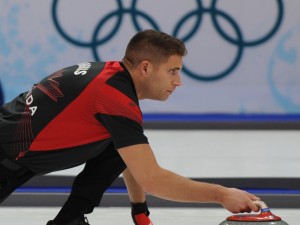Fit to Curl: Curling, job, family, exercise: the juggling act.
I’ve written in earlier entries about my singular focus on curling during the last few seasons. I poured everything I had into my team’s Olympic effort — the rest of my life was put on hold.
This year, however, the balance has changed. My firefighter job is now full-time instead of part-time. I’m planning a move into a new home. And that Olympic gold medal means I have more appearances to make. In other words, I’m getting a crash course in what it’s like for most curlers who want to compete at the highest levels.
Our sport requires a big time commitment but, at the same time, it doesn’t offer the kind of financial reward that many professional athletes can aim to achieve. That means you have to learn to juggle another career and, if you’ve started a family, the demands of life at home.
Frankly, I’ve never been a guy anyone would call a wizard when it comes to time management. Just ask my teammates, my parents and my friends. But necessity is the mother of invention and this year, I’m learning. Quickly.
One thing I’ve found is that it’s easy to waste energy complaining about a lack of time. That negativity can be as much of a time sink as your actual schedule. Accept the fact that you’ve made a bargain with yourself because you love everything about the sport — the competing, the camaraderie, the opportunities to meet new people and see different places. Part of the challenge of your effort to be the best curler you can be is that you’ll need to keep a lot of balls in the air at all times — consider managing your time efficiently just another part of the skill set you need to have.
If you’re really committed to the sport, crafting a life away from the game can be as important as the time you put in on the ice. On my team, Marc Kennedy and Kevin Martin own businesses. It’s never easy to run a successful enterprise but it does offer the flexibility that comes from being your own boss. Ben Hebert worked with his employer to secure a schedule that accommodates curling. I chose to work as a firefighter because I love the job and because it leaves me with time to practice, compete on Tour and train.
Yes, train. Even if you’ve moved from an off-season conditioning program to an in-season routine, I don’t think you can afford to stop going to the gym. I’m lucky to have firefighting colleagues I can train with during my shifts. Fitness is important in firefighting and my whole crew likes to work out. That’s a real bonus for me — time in the gym turns out to be good for both of my careers.
For most curlers, however, a fitness routine might be one of the first things to get axed when the season gets underway. I realize it’s tough to think about working out after a day that may have included sales calls, a team practice and time with your kids but don’t forget there’s good reason to make time for it in your weekly schedule.
Again, this is when you need to stay positive. If you’re struggling to find the time to exercise, rethink it. It’s not just about physical conditioning helping you curl — remind yourself how much better you feel mentally when you work out. It’s not a stretch to say that the mental well-being that comes with fitness will help you be a better person at home, at your job and on the ice. One of the biggest gains that I get from fitting a training session into a busy day is the increase in energy I get from it. Squeeze an hour of physical activity into your day and you will be more confident, less tired and be able to avoid that burnt-out feeling.
Turn training from a requirement into a necessity and you’ll be surprised how much easier it becomes to find the time for it. Fitness is just one more part of the big, crazy juggling act that is competitive curling. Like everything else on your schedule, deal with it positively and you’ll be more likely to stick with it.





